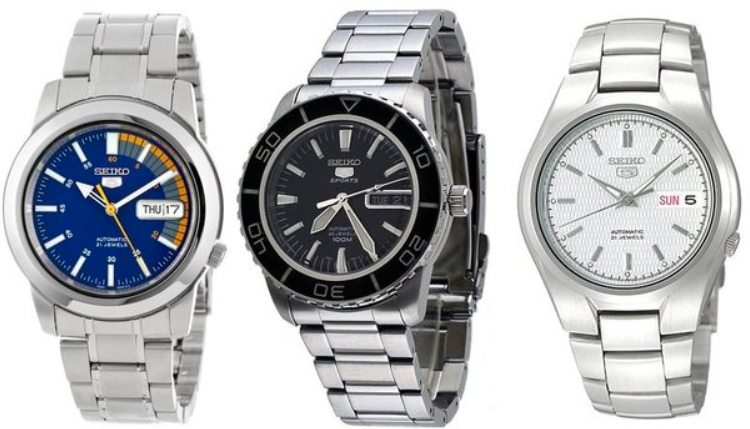Swiss Movement vs. Japanese Movement: A Comparative Overview

When selecting a watch, the choice between Swiss and Japanese movements often comes up as a key consideration. Both Swiss and Japanese movements have established strong reputations in the watch industry, each offering distinct characteristics and advantages. This article provides a comparative overview of Swiss movements and Japanese movements, highlighting their unique features, strengths, and the factors that set them apart.
1. Overview of Swiss Movements
Swiss movements are renowned for their precision, craftsmanship, and luxury. Switzerland’s long history in watchmaking has set a high standard for watch movements globally.
Key Characteristics:
Precision and Craftsmanship
Swiss movements are known for their exceptional precision and meticulous craftsmanship. Swiss watchmakers often use traditional techniques and high-quality materials to ensure the accuracy and longevity of their movements. The artisanal approach in Swiss watchmaking often involves hand-finishing components, resulting in highly detailed and aesthetically refined movements.
Heritage and Prestige
Swiss movements are synonymous with luxury and prestige. Brands such as Rolex, Patek Philippe, and Omega are renowned for their Swiss-made movements, which are often associated with high status and high price points. The heritage of Swiss watchmaking contributes to its prestigious reputation, with many watches becoming collector’s items over time.
Innovative Technology
Despite a strong emphasis on traditional craftsmanship, Swiss movements also embrace cutting-edge technology. Innovations such as advanced escapements and precision regulation systems are common in Swiss watches, reflecting the industry’s commitment to both tradition and technological advancement.
Artisanal Techniques
Swiss movements often feature intricate designs and handcrafted components. The focus on artisanal techniques is a hallmark of Swiss watchmaking, where skilled artisans create movements with a high level of detail and craftsmanship.
2. Overview of Japanese Movements
Japanese movements are celebrated for their efficiency, technological innovation, and value. Japan has become a major player in the global watch industry, offering movements that emphasize precision and practicality.
Key Characteristics:
Accuracy and Reliability
Japanese movements are renowned for their accuracy and reliability. Utilizing advanced quartz technology, these movements offer precise timekeeping with minimal deviation. This focus on accuracy ensures that Japanese watches provide consistent performance over time.
Technological Innovation
Japan is known for its technological advancements in watchmaking. Japanese movements often incorporate innovative features such as kinetic energy storage, which converts motion into power, and advanced quartz technology. These innovations enhance the functionality and performance of Japanese timepieces.
Read also: Harnessing the Power of Content Marketing for Small Business Success
Value for Money
Japanese movements are often associated with affordability and value. They provide high-quality performance at a more accessible price point compared to their Swiss counterparts. This value proposition makes Japanese movements popular among a wide range of consumers.
Durability and Efficiency
Japanese movements are designed to be durable and efficient. They feature robust components and energy-efficient designs, which contribute to their long-term reliability and low maintenance requirements. This practicality makes Japanese movements suitable for everyday use.
3. Comparing Swiss and Japanese Movements
Craftsmanship vs. Efficiency
Swiss movements are known for their artisanal craftsmanship and luxury appeal. The traditional techniques and hand-finishing involved in Swiss watchmaking contribute to intricate designs and high-quality construction. Japanese movements, on the other hand, prioritize efficiency and functionality. They focus on advanced technology and practical performance, often leading to more straightforward and robust designs.
Precision and Technology
Both Swiss and Japanese movements are recognized for their precision, but they achieve it through different methods. Swiss movements often use sophisticated mechanical engineering and traditional techniques to maintain accuracy. Japanese movements leverage advanced quartz technology and innovative features to provide precise timekeeping, reflecting a different approach to achieving high accuracy.
Luxury vs. Value
Swiss movements are frequently associated with luxury and high-end brands. The emphasis on craftsmanship and the prestigious reputation of Swiss watchmakers contribute to the higher price points of Swiss watches. Japanese movements are known for offering excellent value for money, providing reliable performance and advanced technology at more accessible prices. This distinction makes Swiss movements ideal for those seeking luxury, while Japanese movements are suited for those prioritizing value and practicality.
Innovation and Tradition
Swiss watchmakers balance tradition and innovation, incorporating modern advancements while preserving their artisanal heritage. Japanese watchmakers, while respecting traditional elements, are more focused on integrating cutting-edge technology into their movements. This emphasis on innovation results in unique features and advancements that enhance the functionality of Japanese timepieces.
4. Choosing Between Swiss and Japanese Movements
The decision between Swiss and Japanese movements depends on personal preferences and priorities. Swiss movements are best suited for those seeking traditional craftsmanship, luxury, and high-status timepieces. Japanese movements are ideal for those who value precision, technological innovation, and affordability.
Swiss Movements:
- Preferred for luxury and high-end timepieces.
- Appreciated for traditional craftsmanship and intricate designs.
- Associated with prestigious brands and higher price points.
Japanese Movements:
- Ideal for those seeking reliable performance and advanced technology at a reasonable price.
- Valued for their efficiency, durability, and innovative features.
- Commonly found in a wide range of functional and affordable watches.
5. Conclusion
Swiss and Japanese movements each offer distinct advantages and cater to different needs in the watchmaking world. Swiss movements are celebrated for their craftsmanship, luxury, and heritage, while Japanese movements are recognized for swiss vs japanese movement their precision, innovation, and value. Understanding the differences between these movements helps enthusiasts and buyers make informed choices based on their preferences and requirements. Whether opting for the prestige of Swiss craftsmanship or the innovation of Japanese technology, both types of movements offer unique benefits in the world of horology.




